REVIEW: India’s budget radically different to Nene’s
by Lesiba Mothata,
2015-03-05 06:12:56.0
AS A member of Brics (Brazil, Russia, India, China and SA), SA now has countries against which it can benchmark its policies and outcomes. Last week, Indian Finance Minister Arun Jaitley and his South African counterpart, Nhlanhla Nene, tabled their 2015-16 budgets. The differences in focus and direction were quite astonishing.
The message from Jaitley was that although world economic growth had been downgraded, India’s growth had remained the same or had increased. "India is about to take off," he said, claiming that the credibility of its economy had been re-established. He noted that investment sentiment towards India had turned positive and that the government was determined to build on this.
In the past year, India’s consumer price index and current account deficit fell drastically. Growth in gross domestic product (GDP) accelerated 7.4%, making it one of the fastest-growing large economies in the world (China’s growth was 7.3% last year). India attracted about $55bn in foreign direct investment last year, while its foreign-exchange reserves increased to the 2008 pre-crisis level of $340bn.
To secure even faster GDP growth, in an environment he regarded as "inadequate fiscal space", Jaitley gave tax benefits to middle-income earners and reduced corporate taxes from 30% to 25%. Like SA, India faced a difficult balancing act on fiscal revenue and expenditure. Other measures included simplifying tax procedures and supporting young entrepreneurs, who are heavily reliant on technology for doing business, by reducing taxes on royalties and fees for technical services from 25% to 10%.
Overall, India’s budget was aimed at boosting growth and removing red tape. This was achieved by lowering corporate and household taxes and simplifying tax laws. Although the wealth tax was abolished, it was replaced by a surcharge of 2% for the super-rich.
Jaitley’s budget centred on encouraging savings, which can be used to fuel investment and economic growth. Savings are the only source of investment funding and, ultimately, growth. Over the past 20 years, India’s savings rate (29% of GDP) has almost matched that of investment (30%). Due to this funding model, India has been able to sustain faster rates of economic growth (more than 6%).
Unfortunately, this cannot be said about SA’s economy. The large and increasing mismatch between investment and savings has created challenges about how the R3-trillion Presidential Infrastructure Co-ordinating Commission will be funded. Nene’s budget has made some strides in addressing the savings gap; the tax-free savings account is welcome. But the need is far greater and much more is required to actively increase the savings rate, which has averaged only 15% of GDP for the past 20 years. Due to this chronic lack of savings, the sustainability of the lofty expenditure plans in the budget remains in question. Simply put, where will the money come from to fund the proposed plans in an environment of low and structurally weak domestic economic growth?
A closer look at Jaitley’s budget leads to the conclusion that SA has gone in a different and, in some sense, opposite direction from that of India. In India’s budget, GDP growth was the focal point through stimulatory tax cuts and the simplification of tax procedures. In contrast, SA’s middle-income earners have been taxed more, and indirect taxes, which will hit companies and households, have been increased.
Government expenditure growth is now firmly faster than economic growth and inflation, with minimal effect on GDP growth. Accelerated government expenditure through an increased tax take does not necessarily equate to an increase in the pace of economic growth. The comparison of Jaitley’s and Nene’s budgets suggests SA is likely to remain with sub-par growth and continue to be a baby Brics brother.
• Mothata is chief economist at Investment Solutions.
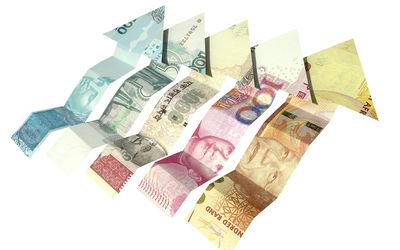
Picture: THINKSTOCK
AS A member of Brics (Brazil, Russia, India, China and SA), SA now has countries against which it can benchmark its policies and outcomes. Last week, Indian Finance Minister Arun Jaitley and his South African counterpart, Nhlanhla Nene, tabled their 2015-16 budgets. The differences in focus and direction were quite astonishing.
The message from Jaitley was that although world economic growth had been downgraded, India’s growth had remained the same or had increased. "India is about to take off," he said, claiming that the credibility of its economy had been re-established. He noted that investment sentiment towards India had turned positive and that the government was determined to build on this.
In the past year, India’s consumer price index and current account deficit fell drastically. Growth in gross domestic product (GDP) accelerated 7.4%, making it one of the fastest-growing large economies in the world (China’s growth was 7.3% last year). India attracted about $55bn in foreign direct investment last year, while its foreign-exchange reserves increased to the 2008 pre-crisis level of $340bn.
To secure even faster GDP growth, in an environment he regarded as "inadequate fiscal space", Jaitley gave tax benefits to middle-income earners and reduced corporate taxes from 30% to 25%. Like SA, India faced a difficult balancing act on fiscal revenue and expenditure. Other measures included simplifying tax procedures and supporting young entrepreneurs, who are heavily reliant on technology for doing business, by reducing taxes on royalties and fees for technical services from 25% to 10%.
Overall, India’s budget was aimed at boosting growth and removing red tape. This was achieved by lowering corporate and household taxes and simplifying tax laws. Although the wealth tax was abolished, it was replaced by a surcharge of 2% for the super-rich.
Jaitley’s budget centred on encouraging savings, which can be used to fuel investment and economic growth. Savings are the only source of investment funding and, ultimately, growth. Over the past 20 years, India’s savings rate (29% of GDP) has almost matched that of investment (30%). Due to this funding model, India has been able to sustain faster rates of economic growth (more than 6%).
Unfortunately, this cannot be said about SA’s economy. The large and increasing mismatch between investment and savings has created challenges about how the R3-trillion Presidential Infrastructure Co-ordinating Commission will be funded. Nene’s budget has made some strides in addressing the savings gap; the tax-free savings account is welcome. But the need is far greater and much more is required to actively increase the savings rate, which has averaged only 15% of GDP for the past 20 years. Due to this chronic lack of savings, the sustainability of the lofty expenditure plans in the budget remains in question. Simply put, where will the money come from to fund the proposed plans in an environment of low and structurally weak domestic economic growth?
A closer look at Jaitley’s budget leads to the conclusion that SA has gone in a different and, in some sense, opposite direction from that of India. In India’s budget, GDP growth was the focal point through stimulatory tax cuts and the simplification of tax procedures. In contrast, SA’s middle-income earners have been taxed more, and indirect taxes, which will hit companies and households, have been increased.
Government expenditure growth is now firmly faster than economic growth and inflation, with minimal effect on GDP growth. Accelerated government expenditure through an increased tax take does not necessarily equate to an increase in the pace of economic growth. The comparison of Jaitley’s and Nene’s budgets suggests SA is likely to remain with sub-par growth and continue to be a baby Brics brother.
• Mothata is chief economist at Investment Solutions.


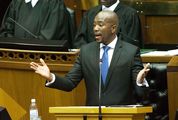
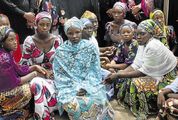
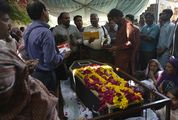



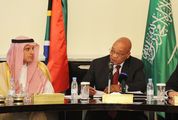














Change: -0.47%
Change: -0.57%
Change: -1.76%
Change: -0.34%
Change: 0.02%
Data supplied by Profile Data
Change: -1.49%
Change: -0.04%
Change: -0.47%
Change: 0.00%
Change: 0.08%
Data supplied by Profile Data
Change: 0.36%
Change: 0.61%
Change: 0.12%
Change: -0.29%
Change: 0.82%
Data supplied by Profile Data
Change: 0.31%
Change: -0.42%
Change: 0.33%
Change: -1.40%
Change: -0.96%
Data supplied by Profile Data